“Go West Young Man”*
Southern California Mystique- ‘SoCal’ became internationally famous in the early 1950s as the avant-garde connecting motor-culture with personal identity. Sports cars, hot rods, cruisers and choppers became the embodiment of a uniquely West Coast sense of self. The lure of this legendary moto-culture is still strong. This is the story of two men who moved to LA, following the SoCal star.
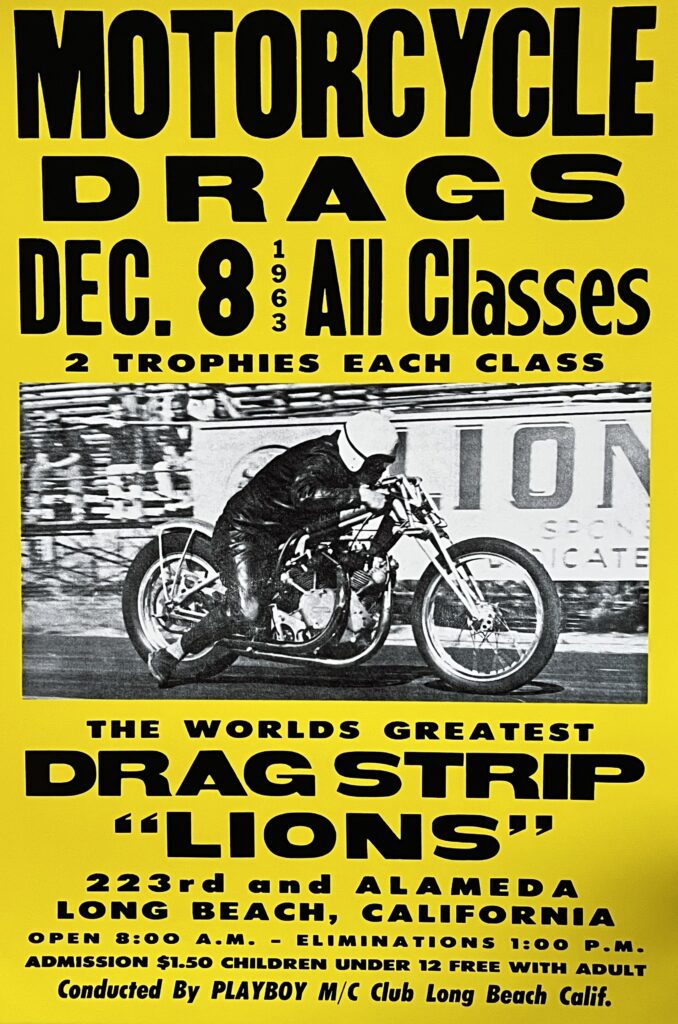
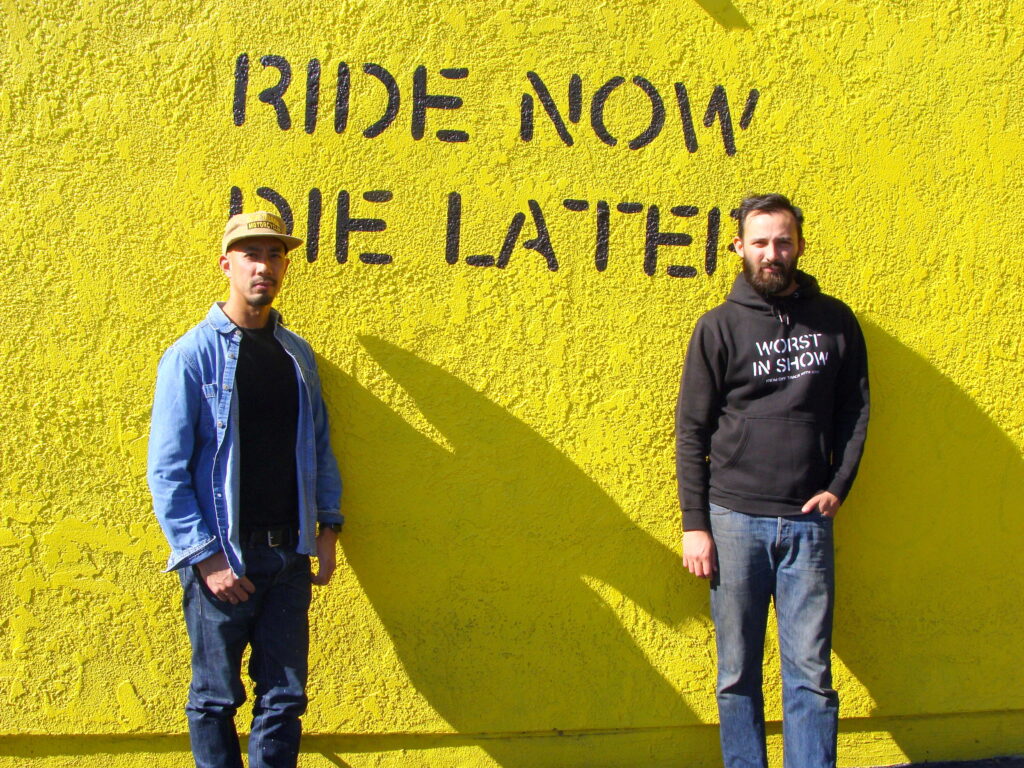
Moto History– After WW2, a new set of racing ovals, and ¼ and ½ mile dragstrips emerged. The Los Angeles Speedway transitioned in 1957 to the Ascot Park dirt track speedway opened by J.C. ”Aggie” Agajanian (1913-1984) that featured NASCAR, Indy car and dirt track motorcycle racing until its closure in November 1990. Fifteen miles northeast of LA, the San Gabriel Valley Speedway (known informally as the Irwindale Speedway) was a dirt track that operated from 1965-73. A new Irwindale track and drag strip opened near the original track in 1999.
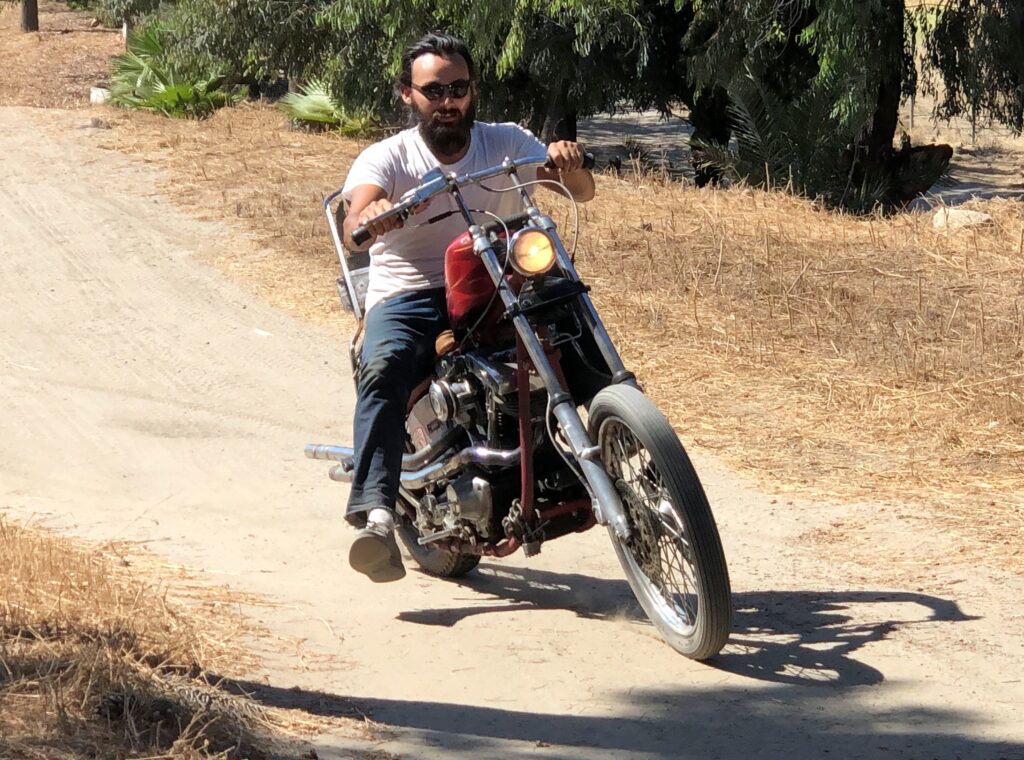
The Lions strip developed a reputation and mystique among drivers and fans; known by drivers as the ‘Beach’ the track was a few blocks from the ocean and drivers believed the ‘thickness’ of the sea-level ocean ‘rare air’ had a mysterious effect on the effectiveness of a drag car’s high performance engine. The grip of the ‘secret mix’ asphalt used to pave the Lion’s strip was believed to produce faster speeds than other strips.
“Each drag strip had its own specific character,” said Tom Madigan, a drag racer and drag strip historian. “That was important to the guys who ran them. Like Long Beach – you didn’t have any nerve if you didn’t run Long Beach. It had a mystique about it.”
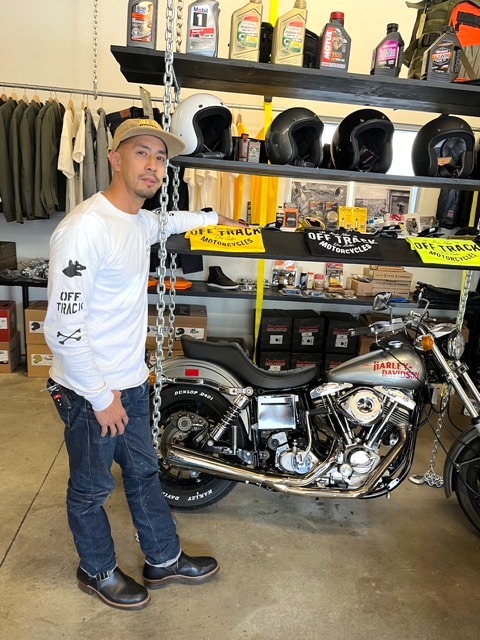
Sy and Dustin opened their new shop in good company: notable custom motorcycle builders Go ‘BRAT STYLE’ Takamine and Roland Sands have impressive shops nearby, and contribute their reputation to the area. Dutch van Someren and his bike culture mecca The Bike Shed is twenty minutes away in the downtown LA Arts District. “Dustin’s wife found the space in the Zafaria area of Long Beach,” Sy Said. “It has a pull-down garage type door that makes it easy to walk bikes into the space for display. We built out the space ourselves and kept things simple. We got creative and used trucker’s ratchet straps to hold up the shelves for the gear we sell.”
Sy and Dustin learned riding culture in California is different than New York: there are many more riders in Cali and this can cause brand subcultures; Harley guys ride with Harley guys, Brit with Brit, Asian with Asian. Sy’s first shop in Jersey didn’t have this luxury of rider critical mass and it was open to all riders as a communal resource center. Sy and Dustin want to continue this sense of inclusiveness at their new shop. “At OFF TRACK it doesn’t matter what kind of motorcycle you’re riding,” Sy said. “As long as you’re riding.”
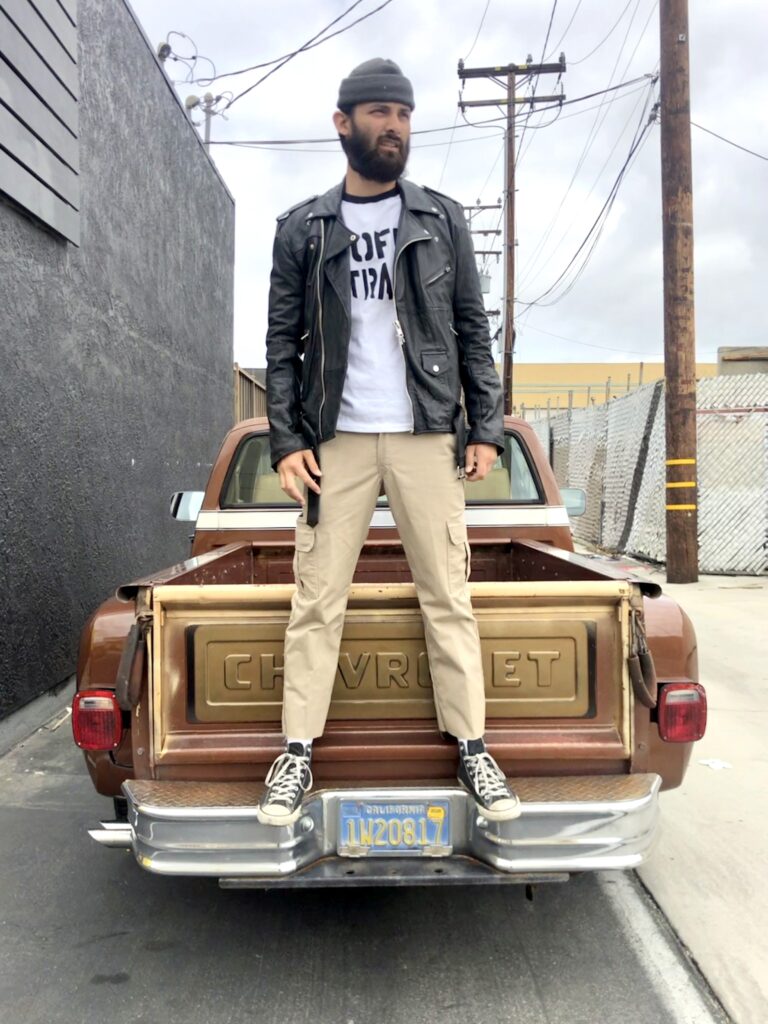
“The freeway scene in LA is so different than the East Coast. Yeah, everything’s open but there’s a sea of traffic – LA and Southern California is known for its traffic. What I love about being here is the culture of the motorcycles. Because of those conditions – weather and smooth roads – you have a lot more bikers here. Population… Because of ease of weather and all the nice amenities… and in this area (Long Beach), everything is in driving distance. You want to get some snow, it’s an hour away. You want to get some hot weather, it’s an hour away. You want some mountains with some twisties and curves, Boom. You got race tracks right there. Everything is nearby.”
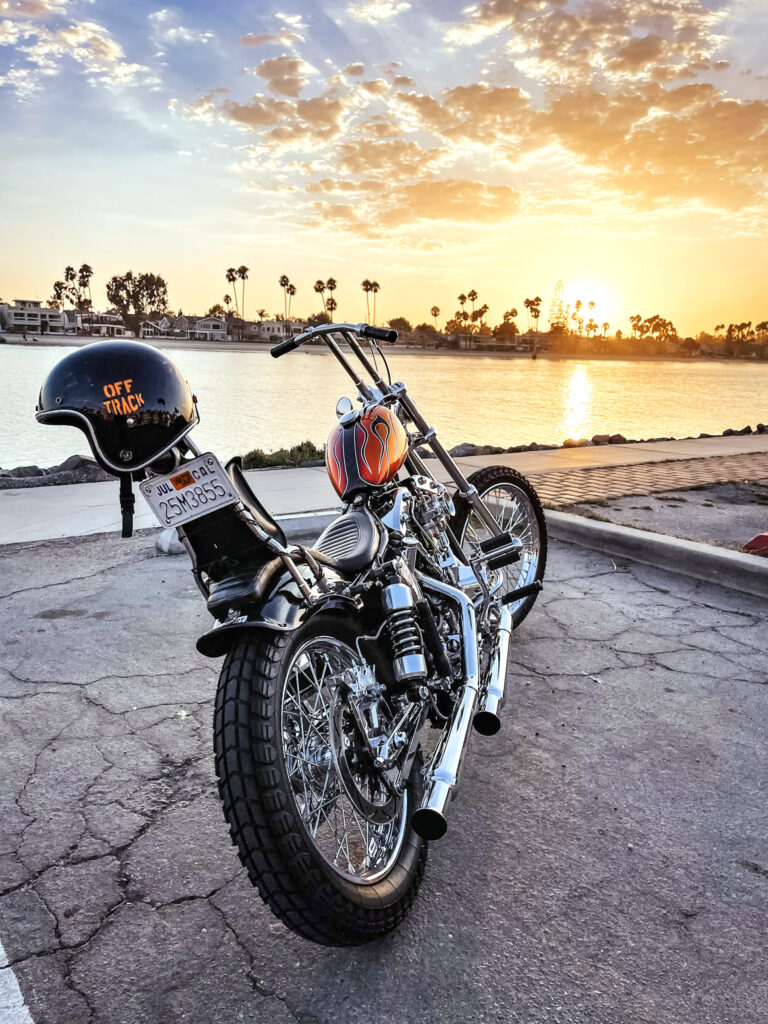
“Because we’re down here and there are so many more motorcycles, you have more groups that are into the different subcultures: there’s a Sportster group, a Dyna group, a chopper group… FXRs, that’s a separate group. Baggers are a separate group. And that’s all within the Harley market. And all these groups are big, they are all around you. Then you get into the things that are happening with Japanese and Italian bikes. Back on the East Coast, we didn’t have that large number of groups, so we rode together. The limited riding time with the seasons that mess everything up; we didn’t care what you rode, we didn’t have big groups. But in LA you may have a bunch of guys who don’t wave to each other because there’s so many riders. East Coast you have that ‘rider wave’ to acknowledge, but in LA there’s so many riders, that wave thing is different.”
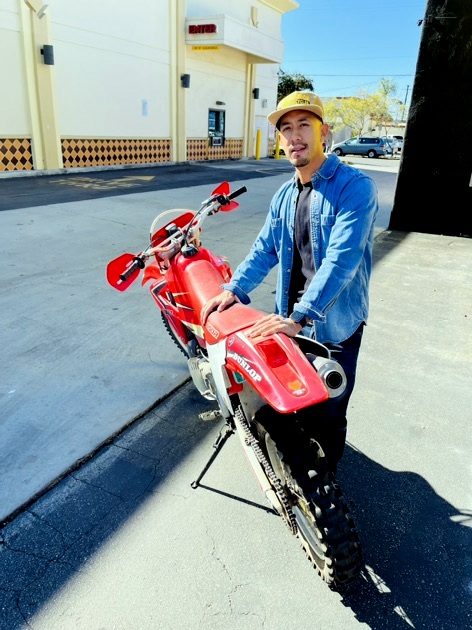
“Our shop is not exclusive – we’re inclusive. We want to have community out here. This sounds so corny- everybody wants community but I think it goes past the talking and goes towards what we are actually doing. You see our events you read our reviews, people feel they are being helped and they belong here. That’s what we do. There is a difference between us and some of the other guys. We want people to feel welcome. I think we are doing the right thing here.
“I was a little unsure about Dustin and me being from the East Coast, the issue of territory and outsiders, but nobody seems to care. Everyone is very open. Part of this is the California vibe, and some is where we are coming from. The vibe here is certainly laid back, and I don’t think we are being judged. It’s been nothing but good. We are able to play well with Roland Sands – we have one of his bikes on our stage, and are going to put another up in the front. The Bike Shed guys just came up here. They know who we are and everything is good.
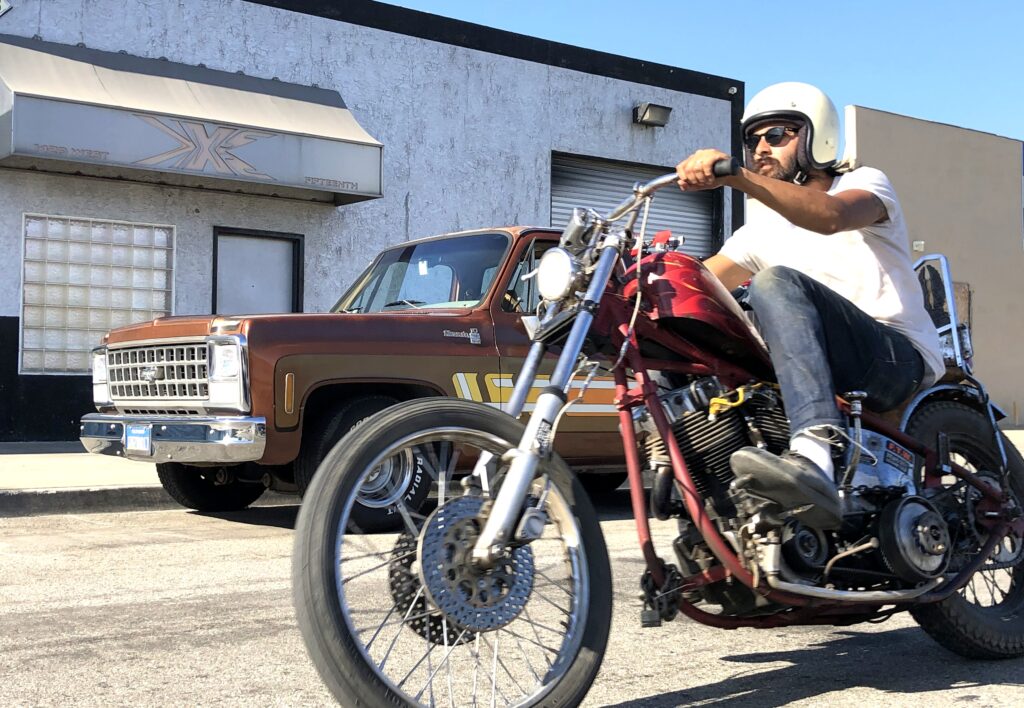
“I am working on a new project to design certain accessories for motorcycles with our own flair. Bikes are changing and so are the styles. I want to have a helping hand in that. On top of this shop, on top of being on-line, on top of designing clothes, I want to have hard parts that we design. I want to promote local businesses and artist too… for our clothing, I want to get it from the LA garment district and promote local Long Beach business. If we’re making parts I want to get it from a CNC machinist that’s from here. I want to help other people.”
“Dustin and I chose OFF TRACK as our name for a reason. We are not following the rest of the other guys, we’re off-track. We’re not perfect and we continue to stay ‘not perfect’ because I think that’s more genuine. We like to rip down the street, we like to ride, it’s not a front. People appreciate us for the way we are, it’s not a reach. It’s just what we do. We went OFF TRACK for a reason. We are different than other people.”
Sy and Dustin are settled into exploring the possibilities of Long Beach and LA motorcycle culture at their OFF TRACK shop. Like so many before them, they followed their gut to move west and its proving to be a good idea.
[*”Go West Young Man” – apocryphal. The phrase is usually attributed to Horace Greely, but he denied ever saying it, and no period (1800s) publications include the phrase. Other authors have been proposed, but the true source of the phrase is unknown. And yet, ‘Go West’ is part of American folklore, and was used to support Westward expansion of the United States in the 19th Century. The phrase is, like much American folklore, a convenient mythology. – Ed.]
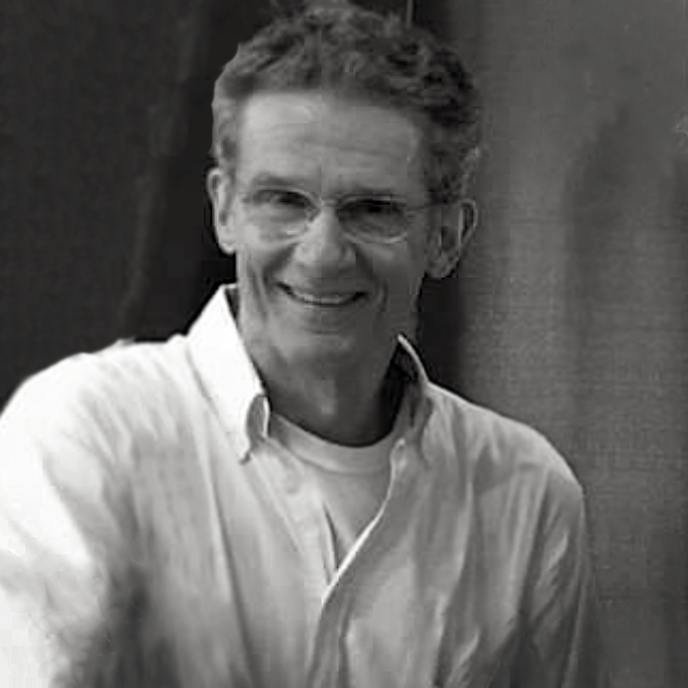
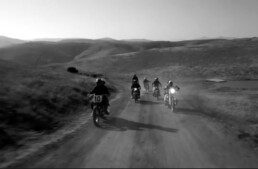
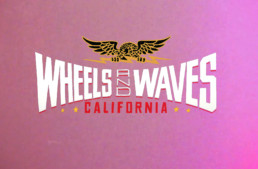
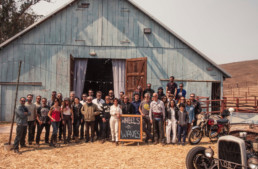
Choppers . They make no damn sense what so ever ! They’re a pain in the ( bleep … literally and figuratively ) to ride ! They’ve injured or killed more competent riders per bike than all sports bikes combined .
And yet … damn … I love em . May not ride em anymore ( give me a bobber these days .. preferably w/sidehack ) But damn … I still loves em !
But err … boys … From one Joisey boy to nuther .. seriously … y’all should of stayed in Joisey rather than moving to LaLa Land … suffice it to say … you’ll learn … the hard way I’s afeared … LaLa Land aint fer the discerning nor the intelligent or the fiscally responsible …..
…and then there’s that Lefty Looney pie in the sky NeoLiberal micro dosing Ayn Randian narcissist thing ya gotta deal with as well ..
” Clowns to the Left of Me .. Jokers to the Right ” says it all these days … and boys … the clowns run rampant in and about LA
Now go back to Joisey where ya belongs … leaving La La Land to the clowns .. afer its too late ! I did . ( left Lala to the nutters ) Never been a day I’ve ever regretted it .. despite the piles of $$$$ I made there ..
😎